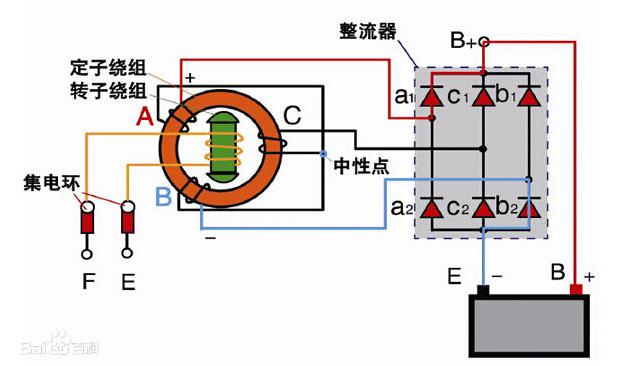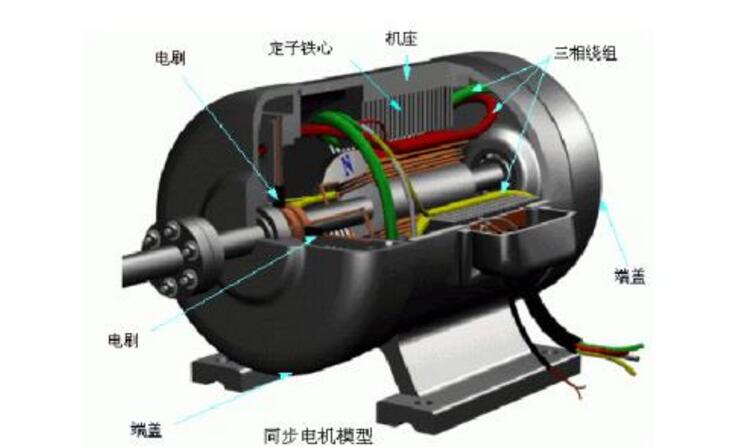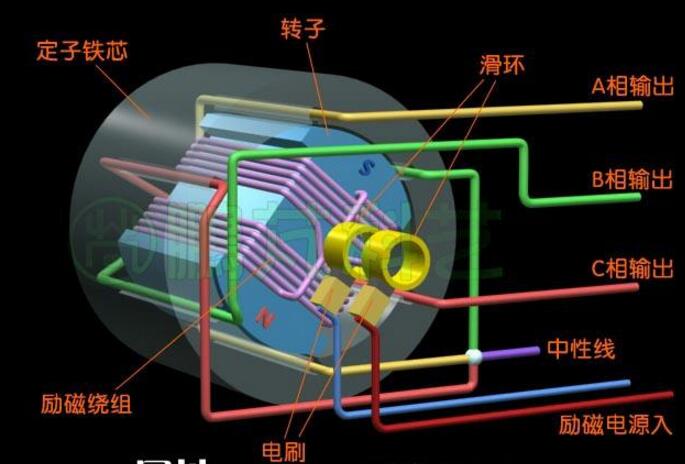The excitation device refers to an electrical control device that can control and regulate the excitation current other than the excitation power in the excitation system of the synchronous generator. Excitation system is an indispensable part of power station equipment. Excitation system includes excitation power supply and excitation device, in which the main part of excitation power supply is exciter or excitation transformer; excitation device is according to different specifications, models and requirements, respectively, from the adjustment screen, control screen, extinction screen and rectification screen parts Combination.
The use of the excitation device is to maintain the synchronous generator terminal voltage at a given level when the power system is working normally. At the same time, it also has the functions of forcibly increasing, demagnetizing and demagnetizing. For the use of excitation transformer as excitation power also has a rectifier function. Excitation devices can be provided separately or as supporting power generation equipment.
Small and medium-sized hydroelectric power generation equipment has already implemented the export product quality licensing system, and products that have not obtained the export quality license are not allowed to export.

The self-adjusting components of the excitation are organic voltage transformers, current transformers on the machine side, and excitation transformers; the excitation devices need to provide the following currents: factory AC380v, factory-use DC220v control power supply. The factory uses DC220v to close the power supply; the following empty contacts need to be provided to start automatically. Automatic shutdown. Grid-connected (one normally open, one normally closed) increase, decrease; need to provide the following analog signals, generator terminal voltage 100V, generator terminal current 5A, bus voltage 100V, excitation device output following relay contact signal; excitation is changed Flow, loss of magnetism, abnormal excitation device, etc.
Excitation control, protection and signal loops are composed of de-excitation switch, magnetic assist circuit, fan, de-excitation switch steal jump, excitation change over-current, regulator failure, abnormal generator condition, and power transmitter. In addition to having to resolve the internal fault of the synchronous generator, it must also be de-energized to reduce the magnetic field of the rotor to the minimum level as quickly as possible to ensure that, in the case of the rotor, the de-excitation time is as short as possible, which is the main reason for the de-excitation device. Features. According to the size of rated excitation voltage, it can be divided into linear resistance demagnetization and non-linear resistance demagnetization.

1, DC generator power supply excitation method
This type of excitation generator has a dedicated DC generator. This dedicated DC generator is called a DC exciter. The exciter is generally coaxial with the generator. The excitation winding of the generator passes through a slip ring mounted on the large shaft. And fixed brush obtains direct current from the exciter. This excitation method has the advantages of independent excitation current, relatively reliable operation, and reduced self-consumption consumption. It is the main excitation method for generators in the past several decades and has relatively mature operating experience. The disadvantage is that the excitation adjustment speed is slow and the maintenance workload is large. Therefore, it is rarely used in units with more than 10MW.
2, AC exciter power supply excitation method
Some large-capacity generators use AC exciter to provide excitation current. The AC exciter is also installed on the generator shaft, and the AC current it outputs is rectified and then supplied to the generator rotor for excitation. At this time, the excitation method of the generator is in the excitation mode, and because the static rectifier is used, it is also called For excited excitation, AC auxiliary exciter provides excitation current. The AC auxiliary exciter can be a permanent magnet machine or an alternator with a self-exciting constant voltage device. In order to improve the speed of excitation adjustment, AC exciter is usually used 100-200HZ IF generator, and AC auxiliary exciter is used 400-500HZ IF generator. The generator's DC excitation winding and three-phase AC winding are all wound in the stator slot. The rotor has only teeth and slots and no winding, like a gear. Therefore, it has no brushes, slip rings and other rotating contact parts, and it has reliable operation. , Simple structure, convenient manufacturing process and other advantages. The disadvantage is that the noise is large and the harmonic potential of the AC potential is also large.
3, no exciter excitation
In the excitation mode, no special exciter is provided, and the excitation power supply is obtained from the generator itself, and after being rectified, the excitation of the generator itself is provided, which is called self-excited static excitation. Self-excited static excitation can be divided into self-resonance and self-reinjection. Self-shunting method It obtains the excitation current through the rectifier transformer connected to the generator outlet, and after being rectified, it supplies the excitation of the generator. This excitation method has the advantages of simple junction, less equipment, less investment, and less maintenance workload. In addition to the rectifying transformer, there is a high-power current transformer connected in series in the stator circuit of the generator. The role of this transformer is to provide a large excitation current to the generator in the event of a short circuit, to make up for the lack of rectifier transformer output. This excitation method has two excitation power sources, a voltage power source obtained by a rectifier transformer and a current source obtained by a series transformer.

This type of excitation generator has a dedicated DC generator. This dedicated DC generator is called a DC exciter. The exciter is generally coaxial with the generator. The excitation winding of the generator passes through a slip ring mounted on the large shaft. And fixed brush obtains direct current from the exciter. This excitation method has the advantages of independent excitation current, relatively reliable operation, and reduced self-consumption consumption. It is the main excitation method for generators in the past several decades and has relatively mature operating experience. The disadvantage is that the excitation adjustment speed is slow and the maintenance workload is large. Therefore, it is rarely used in units with more than 10MW.
2, AC exciterSome modern large-capacity generators use AC exciter to provide excitation current. The AC exciter is also installed on the generator shaft, and the AC current it outputs is rectified and then supplied to the generator rotor for excitation. At this time, the excitation method of the generator is in the excitation mode, and because the static rectifier is used, it is also called For excited excitation, AC auxiliary exciter provides excitation current. The AC auxiliary exciter can be a permanent magnet machine or an alternator with a self-exciting constant voltage device. In order to improve the speed of excitation adjustment, AC exciter is usually used 100-200HZ IF generator, and AC auxiliary exciter is used 400-500HZ IF generator. The DC excitation winding and the three-phase AC winding of this generator are wound in the stator slot. The rotor has only teeth and slots and no winding, like a gear. Therefore, it has no brushes, slip rings and other rotating contact parts [1] It has the advantages of reliable work, simple structure and convenient manufacturing process. The disadvantage is that the noise is large and the harmonic potential of the AC potential is also large.
3, no exciterIn the excitation mode, no special exciter is provided, and the excitation power supply is obtained from the generator itself, and after being rectified, the excitation of the generator itself is provided, which is called self-excited static excitation. Self-excited static excitation can be divided into self-resonance and self-reinjection. Self-shunting method It obtains the excitation current through the rectifier transformer connected to the generator outlet, and after being rectified, it supplies the excitation of the generator. This excitation method has the advantages of simple junction, less equipment, less investment, and less maintenance workload. In addition to the rectifying transformer, the self-regenerating excitation system also has a high-power current transformer connected in series in the stator circuit of the generator. The role of this transformer is to provide a large excitation current to the generator in the event of a short circuit, to make up for the lack of rectifier transformer output. This excitation method has two excitation power sources, a voltage power source obtained by a rectifier transformer and a current source obtained by a series transformer.
Twinkle System Technology Co Ltd , https://www.pickingbylight.com